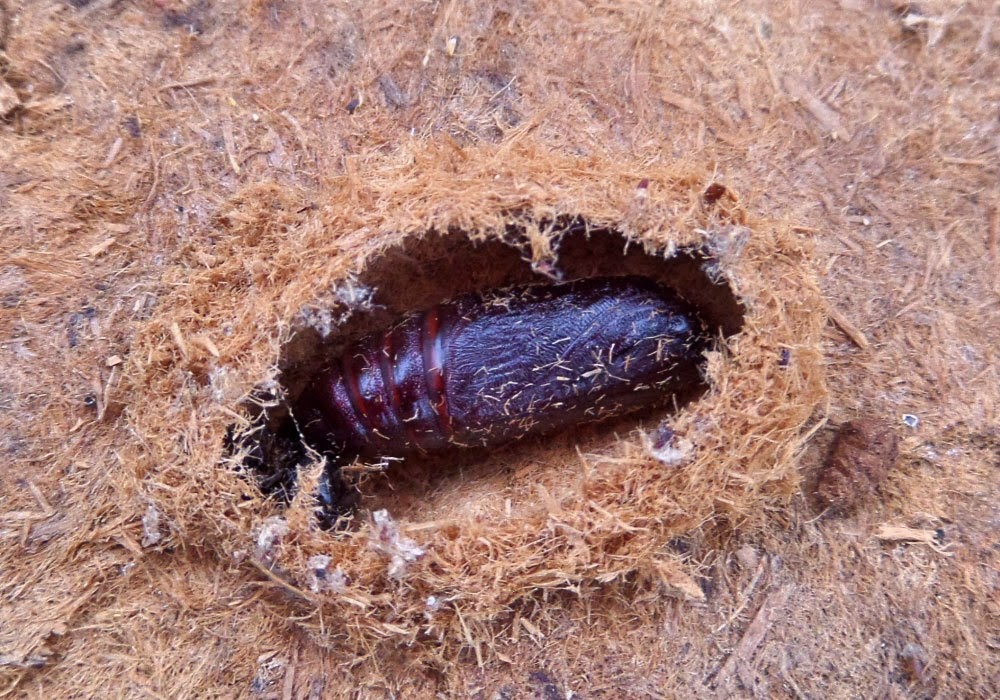How the time flies when you’re busy and when the bees are
swarming it doesn’t leave time for much else, especially if you are like me and
are always leaving everything to the last minute. In this case it’s preparing
enough hives and frames for the swarms to be housed in which I’ve just about
kept up with, (about 25 so far). Then nature decided to lend a hand by dishing
out the rather vile weather we have been experiencing for the last week which
has prevented any more colonies from swarming giving me some catch up time.
Unfortunately this won’t have helped the bees at all. Any colonies prepared and
waiting to swarm may have had to tear down and destroy any Queen cells that
were about to hatch and colonies that had already swarmed may have had problems
mating their new Queens with all the cold wind and heavy rainstorms which seem
to be an increasing spring feature of the weather in this part of France. The
requirement to be around my hives for swarming does rather hamper my other
activities at this time of year which is a shame, but back out and about soon
with some interesting field trips penciled in.
Click on images to enlarge.
On the agricultural front there has been some good news
recently in France
with the total banning of aerial spraying without any exceptions. This has been
an EU law since 2009 but individual member countries can derogate from this
when and if they consider it’s required. In France
this has been principally in the overseas territories of Martinique ,
the Antilles and Guadeloupe with certain
of the vineyards of Mâcon, (Burgandy), in mainland France .
No future authorisations will be granted. Additionally all use of land based
sprays will soon only be permitted in the evening and night, not in the daytime
although how this will work out and be enforced in practice remains to be seen.
Cultivation of Genetically modified crops has been totally
forbidden by the French government which will please many people myself
included although I’m sure the corporations will fight back again and again to
try and get this overturned.
Back to the vineyards where it seems the river Charente
between Angouleme and Saints is the
most polluted stretch of river in France
with the finger pointed firmly at the Cognac
grape growing regions. A study in 2011 by
the highly respected CHU Poitiers showed a higher mortality rate for the population
living in the Charente vineyards. Scientists found an
over representation of Parkinson's disease (29%) and blood cancers lymphoma
types (19%). Atrazine, desethyl atrazine
and the “worlds’ favourite herbicide” glyphosate have all been recorded in
substantial levels. Dependence on chemicals at every stage of most French wine
production is reducing it to no more than another industrial process, sad days
indeed. Even now as I write this there is a report in the paper Sud Ouest of an
incident on May 5th at a school in Villeneuve near Bourg-sur-Gironde surrounded
by vineyards where 23 students from two classes of primary school and their
teacher began to feel the same symptoms of pain in the throat, tingling of the
tongue, eye irritation, nausea and headache in the late morning. Earlier, the
director had tried to contact the mayor, Catherine Verges, who is also one of
the two owners of the vineyards adjacent to the school, to stop the spraying
that was underway but to no avail. These incidents are not uncommon and I have
heard the tales of people feeling unwell in the vineyards since we came to live
in France . The
craziest thing of all is that Emmanuel Giboulot a biodynamic winemaker since
the 1970s was summoned to the Criminal Court of Dijon this year for refusing to
use a chemical product to control flavescence dorée, a bacterial disease of
vines. On April 7th he was fined €1000 following which Emmanuel
Giboulot said “I do not feel guilty at all. I do not agree with the court's
analysis and I still consider that it was not justified to treat the vines
against flavescence dorée in the department of Côte-d'Or in 2013 when no
outbreak had been detected.” He went on to say “that a product called Pyrevert
that is based on natural pyrethrum, an extract of dried chrysanthemum flowers
is permitted in organic agriculture but this insecticide is not selective and
although it destroys the leafhopper which is the insect vector for the disease flavescence
dorée it also destroys a large part of the auxiliary fauna on which I rely for
regulating the ecosystem of my vineyard.” Which is to my mind a totally logical
attitude; if and only if there is a requirement to control something it should
be targeted and proportionate.
Too much to mention everything in the garden but it hasn’t
been good again for butterflies and I've only just seen a few Hornet Queens and
Common wasp Queens in the last week and none of the smaller wasps. It does seem
that the number of insects is decreasing year after year although I have no
hard evidence for that but with the relentless expansion of the “green cereal desert”
and given the massive levels of “cides” that are being sprayed here all the time,
both agricultural and domestic, it wouldn’t be a surprise. However it isn’t all
one way traffic, woodland species seem plentiful with lot’s of Violet oil
beetles early in the year, lot’s of baby Bush crickets in our fields and the
one butterfly that’s abundant this spring is the Southern speckled wood. All
the common birds have nested well on our land and many have fledged their young
such as Long tailed tits, Goldfinches, Blackbirds and Black caps. Nightingales
are once again everywhere making their presence known with their almost non
stop singing with Golden Oriole arriving here in the last week.
Enough for now, it's getting late,
Chris

















































